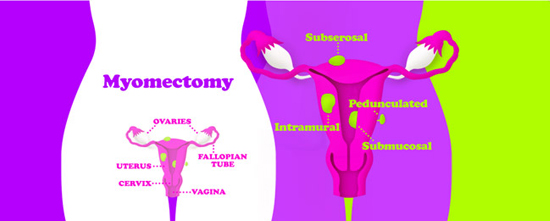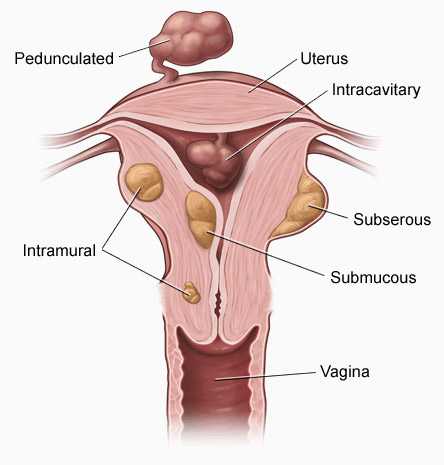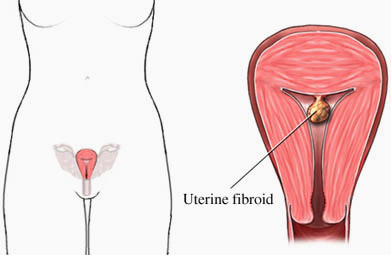Dr. Sankar Dasmahapatra
Myomectomy Doctor in Kolkata, India
DGO, MS, Fellowship in Gynaecological Lap Surgery (Sydney -Australia)
Consultant Gynaecologist & Obstetrician
Infertility Specialist & Lapaoscopic Surgeon
DGO, MS, Fellowship in Gynaecological Lap Surgery (Sydney -Australia)
Consultant Gynaecologist & Obstetrician
Infertility Specialist & Lapaoscopic Surgeon
Myomectomy (my-o-MEK-tuh-mee) is a surgical procedure to remove uterine fibroids — also called leiomyomas (lie-o-my-O-muhs). These are common noncancerous growths that appear in the uterus, usually during childbearing years, but they can occur at any age.
The surgeon's goal during myomectomy is to take out symptom-causing fibroids and reconstruct the uterus. Unlike hysterectomy, which removes your entire uterus, myomectomy removes only the fibroids and leaves your uterus intact.
Women who undergo myomectomy report improvement in fibroid symptoms, including heavy menstrual bleeding and pelvic pressure.

Why it's done?
Your doctor might recommend myomectomy for fibroids causing symptoms that are troublesome or interfere with your normal activities. If you need surgery, reasons to choose a myomectomy instead of a hysterectomy for uterine fibroids include:
• You plan to bear children
• Your doctor suspects uterine fibroids might be interfering with your fertility
• You want to keep your uterus
Here's what you can do to prepare:
1) Gather information. Before surgery, get all the information you need to feel confident about your decision to have a myomectomy. Ask your doctor and surgeon questions.
2) Follow instructions about food and medications. You'll need to stop eating or drinking anything in the hours before your surgery — follow your doctor's recommendations on the specific number of hours. If you're on medications, ask your doctor if you should change your usual medication routine in the days before surgery. Tell your doctor about any over-the-counter medications, vitamins or other dietary supplements that you're taking.
3) Discuss the type of anesthesia and pain medication you may receive. Abdominal, laparoscopic and robotic myomectomies are performed under general anesthesia, which means you're asleep during the surgery. Hysteroscopic myomectomy is performed under general anesthesia or spinal anesthesia, where medication is injected into your spinal canal to numb the nerves in the lower half of your body. Ask about pain medication and how it will likely be given.
4) Arrange for help. Your facility may require that you have someone accompany you on the day of surgery. Make sure you have someone lined up to help with transportation and to be supportive.
5) Plan for a hospital stay if necessary. Whether you stay in the hospital for just part of the day or overnight depends on the type of procedure you have. Abdominal (open) myomectomy usually requires a hospital stay of two to three days. In most cases, laparoscopic or robotic myomectomy only requires an overnight stay. Hysteroscopic myomectomy is often done with no overnight hospital stay.

What you can expect?
Depending on the size, number and location of your fibroids, your surgeon may choose one of three surgical approaches to myomectomy.
1) Abdominal myomectomy
In abdominal myomectomy (laparotomy), your surgeon makes an open abdominal incision to access your uterus and remove fibroids. Your surgeon enters the pelvic cavity through one of two incisions:
A horizontal bikini-line incision that runs about an inch (about 2.5 centimeters) above your pubic bone. This incision follows your natural skin lines, so it usually results in a thinner scar and causes less pain than a vertical incision does. It may be only 3 to 4 inches (8 to 10 centimeters), but may be much longer. Because it limits the surgeon's access to your pelvic cavity, a bikini-line incision may not be appropriate if you have a large fibroid.
A vertical incision that starts in the middle of your abdomen and extends from just below your navel to just above your pubic bone. This gives your surgeon greater access to your uterus than a horizontal incision does and it reduces bleeding. It's rarely used, unless your uterus is so big that it extends up past your navel.
2) Laparoscopic or robotic myomectomy
In laparoscopic or robotic myomectomy, minimally invasive procedures, your surgeon accesses and removes fibroids through several small abdominal incisions.
During laparoscopic myomectomy, your surgeon makes a small incision in or near your bellybutton. Then he or she inserts a laparoscope — a narrow tube fitted with a camera — into your abdomen. Your surgeon performs the surgery with instruments inserted through other small incisions in your abdominal wall. During robotic myomectomy, instruments are inserted through similar small incisions, and the surgeon controls movement of instruments from a separate console.
The fibroid is cut into smaller pieces and removed through these small incisions in the abdominal wall or, rarely, through an incision in your vagina (colpotomy).
Laparoscopic and robotic surgery use smaller incisions than a laparotomy does. This means you may have less pain, lose less blood and return to normal activities more quickly than with a laparotomy. Uterine size and fibroid number and location are factors in determining when laparoscopic surgery is appropriate
3) Hysteroscopic myomectomy
To treat fibroids that bulge significantly into your uterine cavity (submucosal fibroids), your surgeon may suggest a hysteroscopic myomectomy. Your surgeon accesses and removes fibroids using instruments inserted through your vagina and cervix into your uterus.
Your surgeon inserts a small, lighted instrument — called a resectoscope because it cuts (resects) tissue using electricity or a laser beam — through your vagina and cervix and into your uterus. A clear liquid, usually a sterile salt solution, is inserted into your uterus to expand your uterine cavity and allow examination of the uterine walls. Using the resectoscope, your surgeon then shaves pieces from the fibroid until it aligns with the surface of your uterine cavity. The removed tissue washes out with the clear liquid that's used to expand your uterus during the procedure.
Rarely, surgeons also use a laparoscope inserted through a small incision in your abdomen to view the pelvic organs and monitor the outside of the uterus during a complicated hysteroscopic myomectomy.

When you go home?
At discharge from the hospital, your doctor prescribes oral pain medication, tells you how to care for yourself, and discusses restrictions on your diet and activities.
You may have to avoid certain activities, such as driving, lifting heavy objects, climbing stairs or exercising vigorously until you recover. Also, your doctor may advise that you not use tampons or have sexual intercourse during recovery. You can expect some vaginal spotting or staining for a few days up to six weeks, depending on the type of procedure you've had.
• Abdominal myomectomy recovery typically takes four to six weeks.
• Laparoscopic or robotic myomectomy recovery typically takes two to three weeks.
• Hysteroscopic myomectomy recovery typically takes less than a week.
Results
Outcomes from myomectomy may include:
• Symptom relief. After myomectomy surgery, most women experience relief of bothersome signs and symptoms, such as excessive menstrual bleeding and pelvic pain and pressure.
• Fertility improvement. Removing submucosal fibroids by hysteroscopic myomectomy can improve fertility and pregnancy outcomes. Many factors can impact fertility, but often, women who plan a pregnancy after myomectomy conceive within one year of having the surgery. After a myomectomy, wait three months before attempting conception to allow the uterus enough healing time. Although more studies are needed, the effect of abdominal, laparoscopic or robotic myomectomy on fertility appears to be about the same — more limited than if your fibroids can be removed by hysteroscopic myomectomy.
Tiny tumors (seedlings) that your doctor doesn't detect during surgery could eventually grow and cause symptoms. New fibroids, which may or may not require treatment, also can develop. Women who had only one fibroid have a lower risk of needing to have treatment for additional fibroids — often termed the recurrence rate — than do women with multiple fibroids.